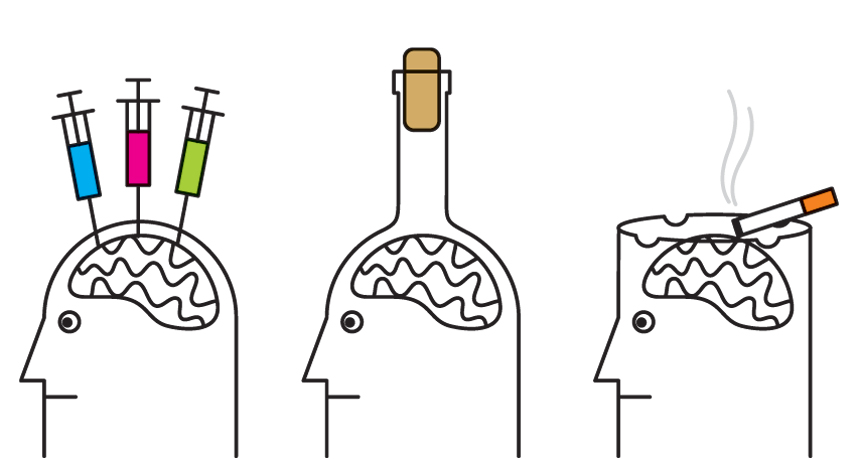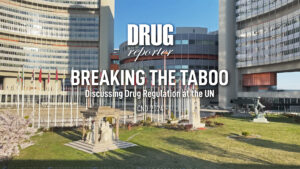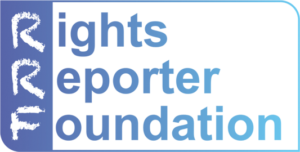Only a fraction of drug users will ever translate from drug use to drug dependence, yet substance abuse is a great burden, both on the individual and society. Unfortunately, our thinking about addiction is much more shaped by political ideologies than by scientific facts. Addiction is often portrayed as a molecular disease which the individual cannot control by his actions, while conservative narratives often depict it as merely the consequence of an individual’s poor decisions. Neither of these simplistic views covers the whole picture; addiction is a complex phenomenon which has biological, psychological and social components.
To further the scientific understanding of addiction, a team lead by Carlos Blanco of Columbia University has analysed data from the National Epidemiologic Survey on Alcohol and Related Conditions survey (NESARC) [1]. NESARC is a large scale survey which sampled the adult US population. Of the initial 43,093 respondents, 34,653 were available at the follow up period (2004-2005). The study focuses on the sub-sample of lifetime users of alcohol (n=28,907), nicotine (n=15,918), cannabis (n=7,389) and cocaine (n=2,259). The paper concentrates on the transition from use to dependence for these substances. To recognise addicted individuals, the study used the criteria set by the fourth edition of the Diagnostic and Statistical Manual of Mental Disorders (DSM IV). The study focuses on two questions: “What is the transition rate from use to dependence for these substances?” and, “Are there common factors that predict the transition from use to dependence?”
The lifetime cumulative transition probability was 67.5% for nicotine, 22.7% for alcohol , 20.9% for cocaine and 8.9% for cannabis users. Note that these are lifetime cumulative transition probabilities, meaning that among individuals who used these substances at least once, this percentage of users satisfied the criteria for addiction at some point during their lifetime.
It is not surprising that weed has the lowest percentage, as it is generally regarded as a mildly addictive substance. Similarly, it is unsurprising that nicotine came out on top. The surprising finding here is that the study suggests that alcohol and cocaine have essentially the same potential for addiction; it should be noted, however, that this comparison might be misleading, due to alcohol’s social acceptability [2].
Approximately half of the cases transitioned from use to dependence within 27,13, 5 and 4 years for nicotine, alcohol, cannabis and cocaine respectively. Therefore, while cocaine and cannabis have a lower rate of transition to dependence, the onset of dependence was quicker, when compared to alcohol and nicotine.
The research also examines the common predictors for transition from use to abuse, across these four substances. Consistent with earlier findings, the study shows that people who abuse one drug are more likely to also abuse another. Neither education nor income levels predicted transition. Individuals who are single or cohabiting with a partner were also more likely to abuse drugs than those who were married. Multivariate survival models have indicated that young people and minorities are more likely to become addicted.
The genetic background of minorities could explain some of the differences. A well-known example of how genetics can modulate drug use is the ‘Asian flush’ reaction (red flushes associated with erythema on the neck, shoulders and face after consuming alcohol). This effect is caused by an allele of the ALDH2 (aldehyde dehydrogenase 2 family) gene, widespread in East Asia, but rare in the European population. That being said, it is likely that the added vulnerability of minorities to drug abuse is not due to these genetic differences, but rather, can be explained by socioeconomic factors.
The most important finding of the study is that there are common sociographic variables associated with the transition from drug use to abuse across multiple substances. This finding argues for the viewpoint that addiction is not due to molecular mechanisms induced substances, but rather a more general condition. Indeed addiction can be seen as any excessive reward-seeking behaviour such as gambling, pathological working (‘workaholism’), etc. Given that these excessive behaviors share the same symptomology, it is likely that they also share the same underlying neuronal mechanisms. It is therefore reasonable to assume that similar medical and therapeutical approaches could provide a cure for those who suffer from addiction.
References:
[1]: Bernardi, Silvia, et al. "The lifetime impact of attention deficit hyperactivity disorder: results from the National Epidemiologic Survey on Alcohol and Related Conditions (NESARC)." Psychological medicine 42.04 (2012): 875-887.
[2]: Trice, Harrison Miller, and Janice M. Beyer. "A sociological property of drugs: acceptance of users of alcohol and other drugs among university undergraduates." Journal of studies on alcohol 38.1 (1997): 58-74.





